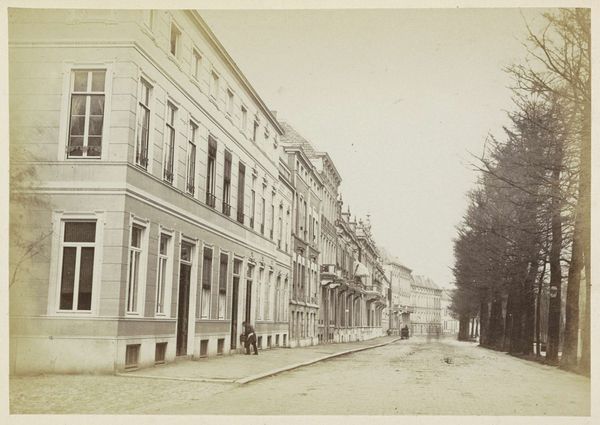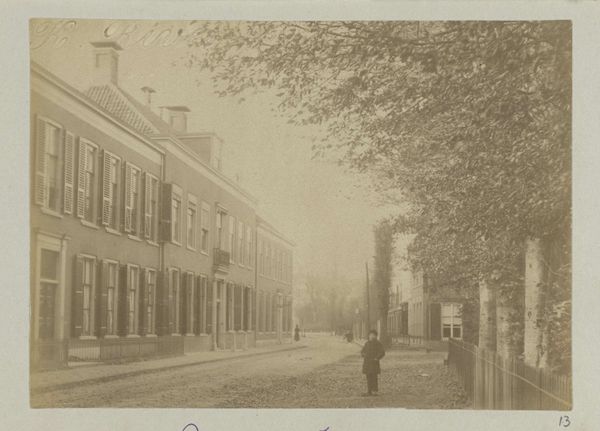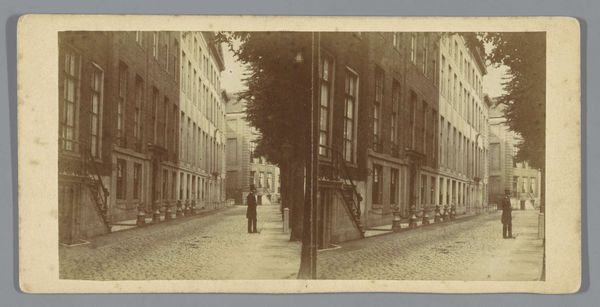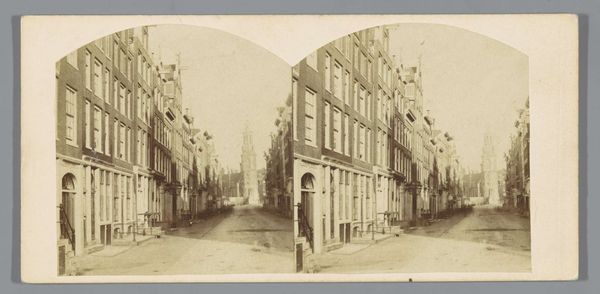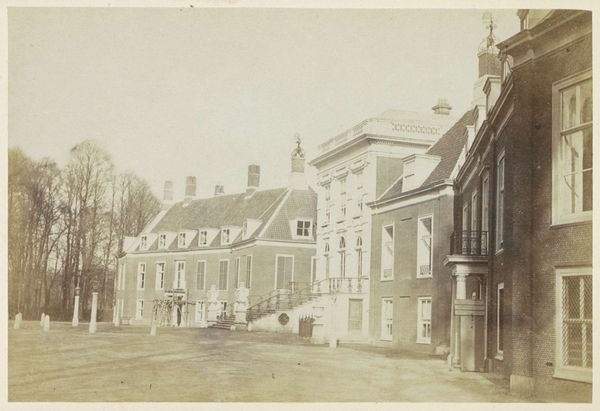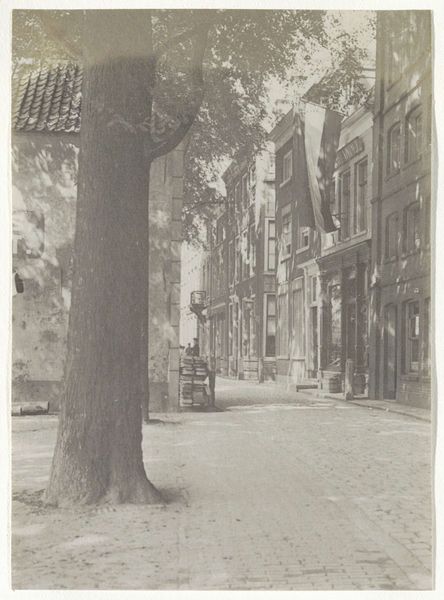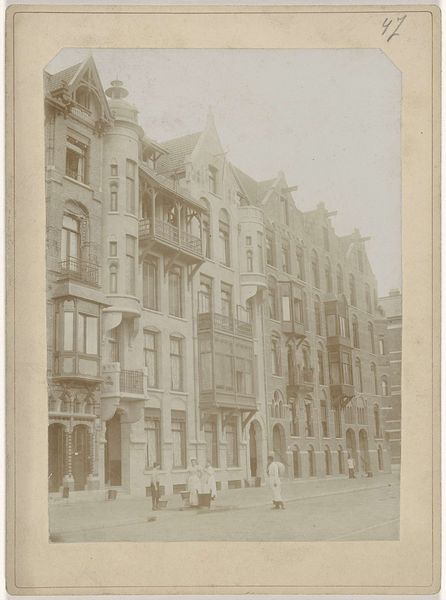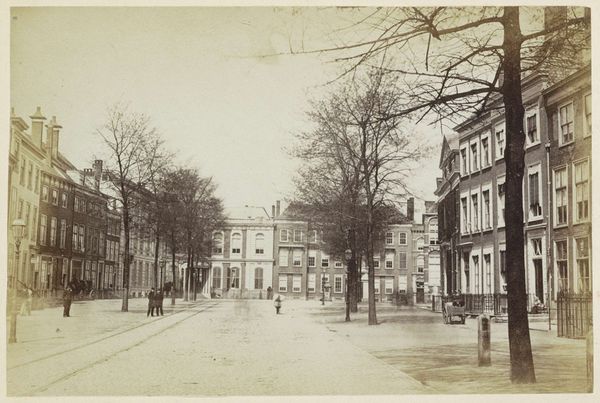
Gezicht op de Keizersgracht met rechts het Huis met de Hoofden c. 1860 - 1875
0:00
0:00
anonymous
Rijksmuseum
photography
#
dutch-golden-age
#
landscape
#
photography
#
architectural drawing
#
cityscape
#
realism
Dimensions: height 82 mm, width 82 mm, height 142 mm, width 234 mm
Copyright: Rijks Museum: Open Domain
Curator: This photograph, dating from about 1860 to 1875, is titled "Gezicht op de Keizersgracht met rechts het Huis met de Hoofden," or "View of the Keizersgracht with the House with the Heads on the Right." It's part of the Rijksmuseum collection. Editor: My first thought is how powerfully quiet this image feels. The light is soft, and there's this palpable sense of stillness hanging over the street, despite being in a major city. Curator: Absolutely. Let's delve into what we’re seeing. The 'Huis met de Hoofden' – the House with the Heads – gets its name from the six sculpted heads adorning its façade, representing Roman deities. The choice of these particular gods may symbolize the ambition for a renewed republic within Amsterdam in the Dutch Golden Age, despite its being owned at that time by a wealthy merchant, who wanted to show off his prestige. Editor: Fascinating, how the deities serve as totems of societal aspiration. Looking at the light and shadow play across the brickwork and the facades… the heads themselves project very strongly into the contemporary eye. The shadows accentuate them. They stand almost as markers of memory. Curator: Precisely, and consider the social history embedded in this photograph. Streetscapes were seldom viewed through the photographic lens in this period, even though many buildings are still standing today. It marks the transition into modern urban development as well as ideas about representation. This captures a pivotal shift. Editor: It’s also remarkable how the image frames this sense of hierarchy. Look at the detail afforded to the "Huis met de Hoofden." It's almost as if it is deliberately set up for one class to impress another, despite being shot by an anonymous photographer, and viewed by so many diverse audiences today. It resonates profoundly today within our own turbulent climate of social discourse, when public spaces now, too, feel increasingly politicized. Curator: Yes, by focusing so intently on one particular moment, and indeed place, it shows us everything changes. And photography, perhaps more acutely than any other medium, manages to demonstrate the passage of time and of its very personal impact. It gives access to something you never thought of. Editor: An amazing collision of elements, truly. I walk away pondering what might remain of us.
Comments
No comments
Be the first to comment and join the conversation on the ultimate creative platform.
